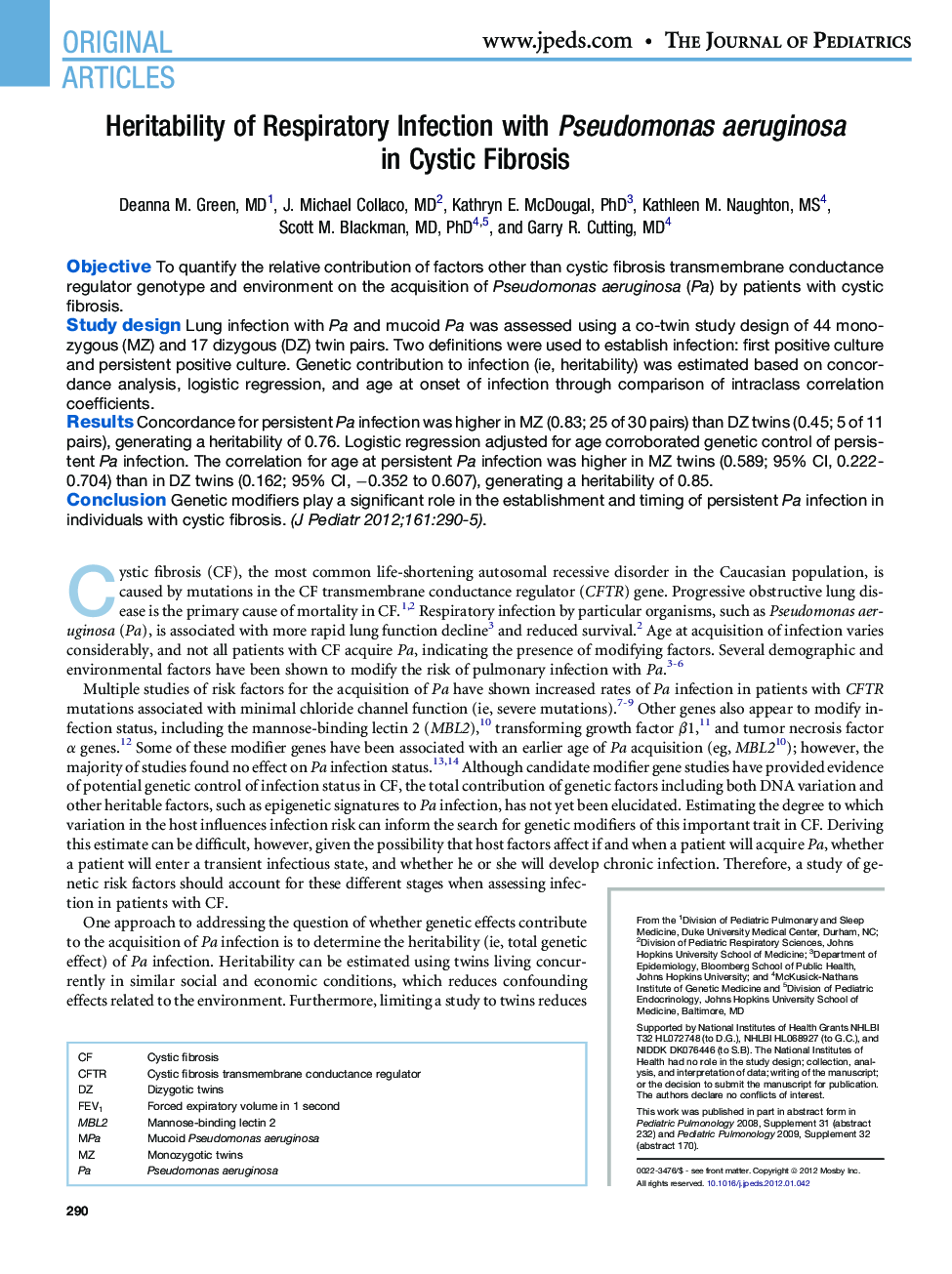| Article ID | Journal | Published Year | Pages | File Type |
|---|---|---|---|---|
| 6223107 | The Journal of Pediatrics | 2012 | 7 Pages |
ObjectiveTo quantify the relative contribution of factors other than cystic fibrosis transmembrane conductance regulator genotype and environment on the acquisition of Pseudomonas aeruginosa (Pa) by patients with cystic fibrosis.Study designLung infection with Pa and mucoid Pa was assessed using a co-twin study design of 44 monozygous (MZ) and 17 dizygous (DZ) twin pairs. Two definitions were used to establish infection: first positive culture and persistent positive culture. Genetic contribution to infection (ie, heritability) was estimated based on concordance analysis, logistic regression, and age at onset of infection through comparison of intraclass correlation coefficients.ResultsConcordance for persistent Pa infection was higher in MZ (0.83; 25 of 30 pairs) than DZ twins (0.45; 5 of 11 pairs), generating a heritability of 0.76. Logistic regression adjusted for age corroborated genetic control of persistent Pa infection. The correlation for age at persistent Pa infection was higher in MZ twins (0.589; 95% CI, 0.222-0.704) than in DZ twins (0.162; 95% CI, â0.352 to 0.607), generating a heritability of 0.85.ConclusionGenetic modifiers play a significant role in the establishment and timing of persistent Pa infection in individuals with cystic fibrosis.
